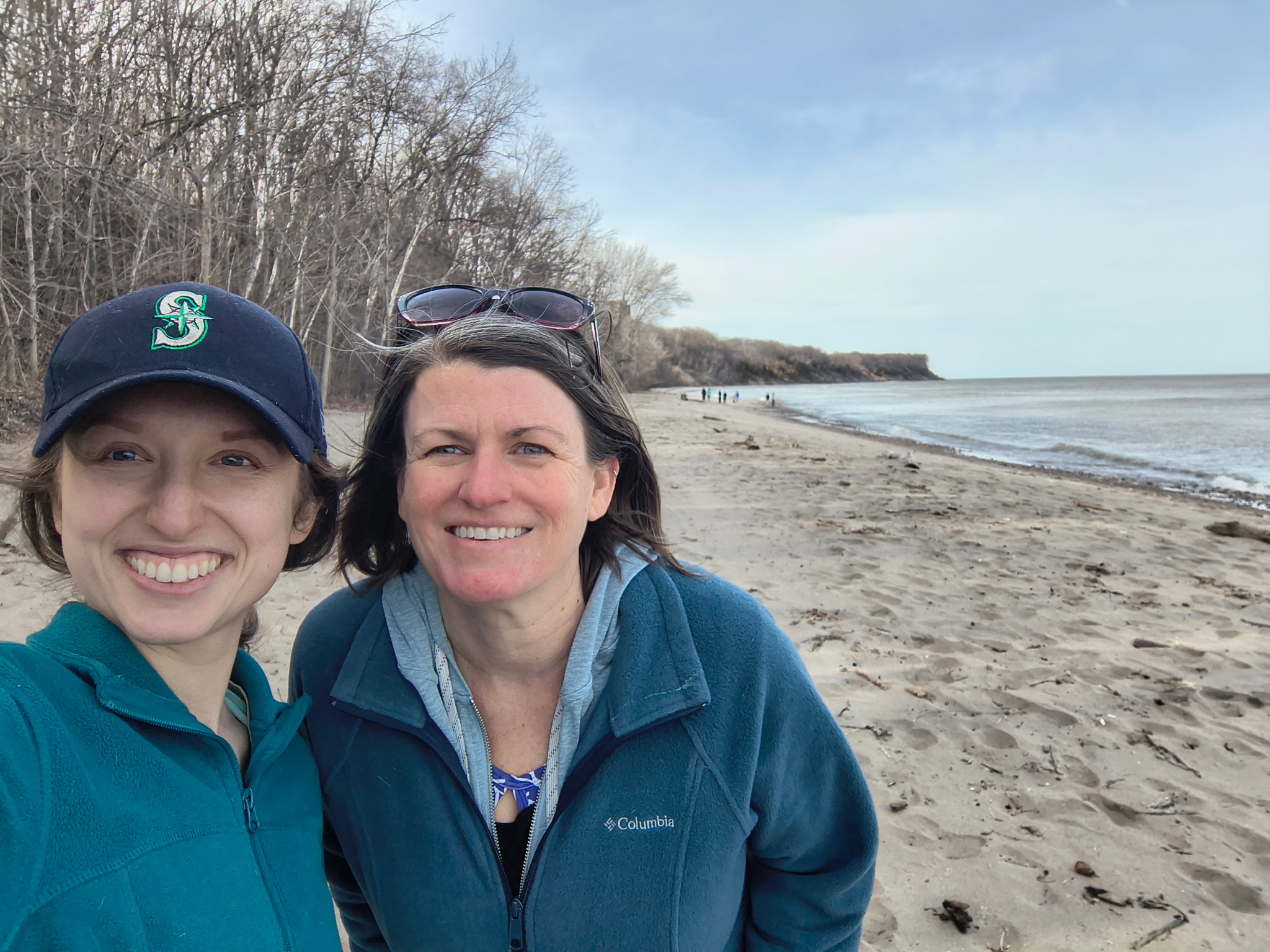More than a thousand walleye are in the six sets of circular water tanks at the UW-Stevens Point (UWSP) Aquaponics Innovation Center in Montello, Wis. And they swim around in near-total darkness, their environment protected by several sets of pitch-black curtains.
“Walleye are sunset and nighttime feeders,” explained Chris Hartleb, UWSP professor of aquaculture and the caretaker of this walleye colony. “This way, they can feed 24 hours a day. Plus, they’re very skittish fish—it takes almost nothing to startle them.”
There’s good reason to keep them calm. These fish are a key part of a two-year aquaculture research project funded by Wisconsin Sea Grant designed to compare the production of walleye, a native Wisconsin fish, and saugeye, a natural hybrid of walleye and sauger, in a recirculating aquaculture system and a closed aquaponics system.
As it reaches the midway point, the project, headed by Hartleb and Greg Fischer, Facility Operations Manager of UWSP’s Northern Aquaculture Demonstration Facility (NADF) near Bayfield, Wis., is looking more promising by the fish tank. Both Fischer and Hartleb spent the last year raising saugeye in tanks with low (30kg/m³), medium (60kg/m³ ) and high (90 kg/m³) densities at each facility.
“The saugeyes grew really well,” said Fischer. “We reached our target goal of growing a one-pound fish in less than a year at each of the three densities. We even had some fish up to two pounds.”
Better still, Fischer’s NADF operation and systems experienced no significant issues with maintaining water quality, a common problem that can often derail an aquaculture operation. Now, like Hartleb, he’s raising walleye as well, in six specialized dual drain, cornell-style tanks connected to a more traditional recirculating aquaculture system with a fluidized sand biofilter.
In a burgeoning industry where, as John Pade, the co-founder of Nelson & Pade Inc., a partner on Hartleb’s part of the project likes to say, “enthusiasm often exceeds knowledge,” Hartleb and Fischer’s research could be critical to showing a new way forward with a new species for Wisconsin aquaculture.
“That’s the question–economically, how does this fit in? “ Fischer asked. “That’s the big puzzle. Can you do this at a commercial scale? At NADF, we’ve have been investigating and working on walleyes and their hybrids for food fish use for almost 10 years now and this research is critical to move this species forward for sustainable U.S. aquaculture.”
Currently, nearly 90 percent of the aquaculture industry in the United States is focused on tilapia. While there are ways in which that makes sense—the fish grows well in high-density tanks and sometimes returns a good price at market—there are also ways in which it doesn’t.
“As a biologist, it’s scary,” said Hartleb. “What if a disease wipes out tilapia fry at nurseries?”
In fact, there are only three nurseries in the United States that provide tilapia fingerlings to aquaculture/aquaponics operations, and two of them are in the Southwest, not far from Mexico, which experienced a major outbreak of the lethal Tilapia Lake Virus earlier this year.
Walleye offers its own economic advantage. One-pound fillets typically fetch anywhere from $14-16 a pound. And as Hartleb is in the process of showing, walleye can be the cornerstone of a successful aquaponics operation. At the Aquaponics Innovation Center in Montello, Hartleb is raising walleye at the same low, medium and high density as the saugeye were. The water containing the fish waste is drained, filtered and oxygenated, then pumped into tanks to provide nutrients to a wide variety of greens, from multiple types of lettuce to kale. Hartleb has even taken a stab at growing broccoli.
“Aquaculture is about purifying the water,” explained Hartleb. “Aquaponics is about purifying the water to a non-toxic level. It’s a closed system, and you’re basically Mother Nature. Any change you make shifts everything.”
Hartleb’s also been charting the water chemistry necessary to keep both the fish and the plants healthy and productive. For instance, walleye are a carnivorous fish, which has an impact on the proper nutrient process. (“You may have to support potassium,” Hartleb said.)
So far, the results are encouraging. Walleye in the low-density tanks grew the best, reaching as high as a pound and a half. In the medium density tanks, 93 percent of the fish reached one pound. The high-density tank was somewhat less successful—70 percent of the fish did not reach a pound.
Given the dual thrust of an aquaponics operation, that’s not necessarily bad news.
“If you find the lowest density is best, why wouldn’t you grow more plants?” Hartleb asked.
With another year to go on the project, a significant amount of data analysis remains, and a few bottlenecks will need to be resolved before walleye and saugeye can truly go mainstream. The biggest one is the lack of a nursery provider. If a new startup wants to begin raising walleye and saugeye, they need fingerlings. Walleye fingerlings are typically grown for stocking in lakes, not fueling startups, and UWSP NADF doesn’t yet produce enough saugeye fry to become a regional supplier.
“We need a private industry partner to step up to the plate on this aspect of providing biosecure, feed trained, intensively reared fingerlings to support the industry. We know how to do this successfully and can help with training and setup.” said Fischer.
That’s where the education and outreach piece of the project comes in.
“We have the know-how. We have the tools. We can teach anyone,” said Hartleb.
Fischer agrees.
“If we can resolve some of these questions and continuing working with and educating interested fish farmers, I’m confident that walleye and hybrids will be the next big thing for Wisconsin aquaculture.”





